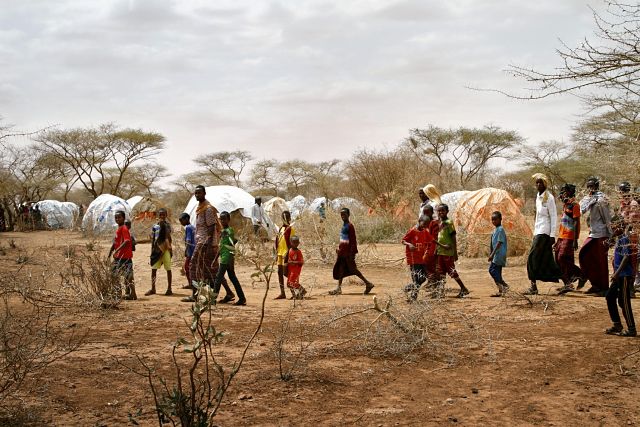 Two seasons of failed rains have left millions in Ethiopia's Somali region dependent on food aid, calling into question how viable traditional forms of life still are in an era of changing climate. (The Washington Post)
Two seasons of failed rains have left millions in Ethiopia's Somali region dependent on food aid, calling into question how viable traditional forms of life still are in an era of changing climate. (The Washington Post)
Zeinab Taher once roamed through Ethiopia’s arid Somali region tending a vast herd of 350 sheep, goats and cattle with her nine children.
Then the autumn rains failed and the grass that fed her animals didn’t grow. No rain came this spring, either, and the livestock began to die. Now, wrapped in her orange shawl, the 60-year-old huddles in a makeshift, windblown camp along with several thousand others, depending on food and water from international agencies.
Another drought has seized the Horn of Africa, devastating the livestock herders in these already dry lands. Even as the government and aid agencies struggle to help them, there is a growing realization that with climate change, certain ways of life in certain parts of the world are becoming much more difficult to sustain.
In Ethiopia, which unlike neighboring Somalia or South Sudan has a strong, functioning government, the emergency effort has kept people alive. Authorities and aid agencies are trying to get beyond the immediate humanitarian response and encourage a shift to livelihoods less vulnerable to drought and climate shocks.
—
Related:
Ethiopia Warns Emergency Drought Aid to Run Out Next Month (AP)
Join the conversation on Twitter and Facebook.

























